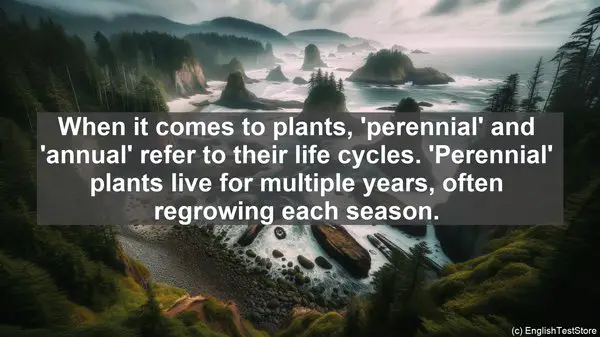Introduction: The Importance of Language in Landscape Planning
Welcome to today’s lesson on the top 10 commonly confused words in landscape planning. As you know, effective communication is crucial in any field, and landscape planning is no exception. Misunderstandings due to word confusion can lead to costly mistakes. So, let’s dive into these words and clarify their meanings.
1. Site vs. Sight
The first pair of words that often cause confusion is ‘site’ and ‘sight.’ ‘Site’ refers to a specific location or area, while ‘sight’ refers to the ability to see. For example, when discussing a potential construction site, we’re referring to the physical space, not the act of seeing.
2. Native vs. Indigenous
The terms ‘native’ and ‘indigenous’ are often used interchangeably, but they have subtle differences. ‘Native’ refers to a plant or species that naturally occurs in a particular region, while ‘indigenous’ refers to something originating or occurring naturally in an area. So, a plant can be native to a region, but not necessarily indigenous.
3. Erosion vs. Weathering
While both ‘erosion’ and ‘weathering’ involve the wearing away of materials, they differ in the process. ‘Erosion’ is the movement of materials, like soil or rock, by wind, water, or other forces. ‘Weathering,’ on the other hand, refers to the breakdown or decomposition of materials due to natural elements, such as temperature changes or chemical reactions.
4. Hardscape vs. Softscape
In landscape design, ‘hardscape’ refers to the non-living elements, like pathways, walls, or structures. ‘Softscape,’ on the contrary, includes the living elements, such as plants, trees, or grass. Both are essential in creating a balanced and functional outdoor space.

5. Arborist vs. Horticulturist
While both ‘arborists’ and ‘horticulturists’ deal with plants, their focuses differ. ‘Arborists’ specialize in the care and maintenance of trees, including tree health, pruning, or removal. ‘Horticulturists,’ on the other hand, have a broader scope, encompassing the cultivation and management of plants in general.
6. Conservation vs. Preservation
Though often used interchangeably, ‘conservation’ and ‘preservation’ have distinct meanings. ‘Conservation’ involves the sustainable use and management of natural resources, ensuring their availability for future generations. ‘Preservation,’ on the other hand, aims to maintain or protect something in its original state, often with minimal human intervention.

7. Perennial vs. Annual
When it comes to plants, ‘perennial’ and ‘annual’ refer to their life cycles. ‘Perennial’ plants live for multiple years, often regrowing each season. ‘Annual’ plants, on the contrary, complete their life cycle within a year, from seed to flower to seed again. Understanding these terms is crucial when planning for a long-lasting landscape or a seasonal display.
8. Biodiversity vs. Species Richness
While related, ‘biodiversity’ and ‘species richness’ have different scopes. ‘Biodiversity’ encompasses the variety of life forms, including plants, animals, and microorganisms, within a given area. ‘Species richness,’ on the other hand, focuses solely on the number of different species present. So, ‘biodiversity’ is a broader term, considering not just the number but also the interactions and ecological roles of the species.
9. Zoning vs. Land Use
In urban planning, ‘zoning’ and ‘land use’ are key concepts. ‘Zoning’ refers to the division of land into different zones or areas, each with specific regulations or permitted uses. ‘Land use,’ on the other hand, is a broader term, encompassing the activities or purposes for which the land is utilized, whether residential, commercial, industrial, or recreational.
10. Buffer Zone vs. Transition Zone
Both ‘buffer zones’ and ‘transition zones’ serve as intermediate areas, but their purposes differ. A ‘buffer zone’ is a designated area that helps mitigate or reduce the impact of one land use on another. For example, a vegetated strip between a residential area and a highway. A ‘transition zone,’ on the other hand, is an area that facilitates the gradual change or shift between two different land uses, often with a mix of elements from both.
